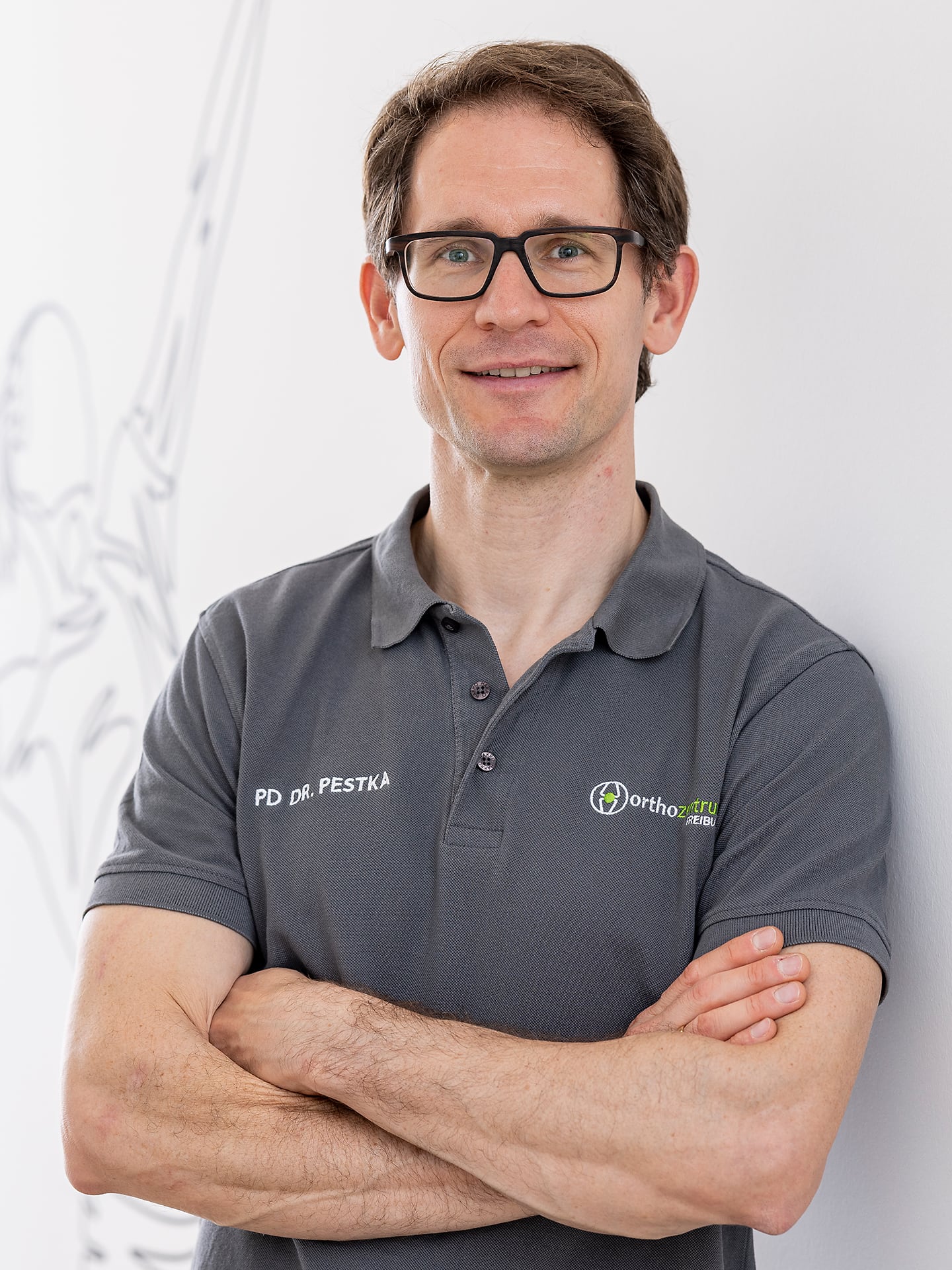Anatomy & Function
The spine consists of 24 vertebrae and can be divided into a cervical, thoracic and lumbar spine. The cervical and lumbar spine are naturally curved forward, the thoracic spine backward. Normally, there is no lateral curvature of the spine.
Scoliosis refers to a lateral curvature of the spine, coupled with a twisting of the vertebral bodies themselves. It is estimated that slightly more than 2% of the population suffers from this disease of the spine. Girls between the ages of 10 and 14 are most commonly affected.
Depending on the age of the affected person at the time of onset, scoliosis is divided into different forms, which differ in the affected spinal segment, shape (C-shaped, S-shaped) and prognosis. Adolescent scoliosis is the most common form.
- Infantile scoliosis: 0-3 years
- Juvenile scoliosis: 4-10 years
- Adolescent scoliosis: 10-16 years old
Scolioses that occur before the age of 10 are alternatively grouped together as "early onset scolioses".
Infantile scoliosis is a special form, which is merely a malposition and not a manifest malposition of the spine. It occurs during the first months of life and disappears by itself in the majority of cases. Only very rarely does a transition to infantile scoliosis occur.
Symptoms & Complaints
Signs of scoliosis may include:
- Visible malposition of the spine
- In severe cases, obstruction of breathing if necessary
Depending on the severity of the scoliosis, the lateral curvature of the spine is barely to clearly visible. The shoulders of those affected can be of different heights, sometimes one shoulder blade protrudes. The waist triangles appear asymmetrical and the pelvis is crooked. This can be a cosmetic impairment for the patients.
Severe scoliosis can lead to obstruction of breathing due to insufficient expansion of the lungs. Stress on the heart is also possible due to the increased pressure in the lungs.
It is important to know that back pain is not typical for scoliosis. However, in old age, it can occur more frequently.
Causes
Causes of scoliosis include:
- structural idiopathic scoliosis: unclear
- Symptomatic scoliosis: e.g. due to leg length discrepancy, congenital
Scolioses are further divided into idiopathic and symptomatic forms depending on the cause. The majority of cases are idiopathic scolioses that occur during growth.
Idiopathic scoliosis cannot be assigned a specific cause. However, it is suspected that genetic factors play a decisive role. Different rates of growth of the anterior and posterior portions of the vertebral bodies result in the lateral curvature of the spine and twisting of the vertebral bodies.
In contrast, in the case of symptomatic scoliosis, the causes are known, e.g. congenital malformations or leg length discrepancies.
Diagnosis
Our specialist for pediatric orthopedics Priv.-Doz. Dr. Pestka will interview you and your child in detail about the symptoms. In particular, it is important to know when the spinal deformity was first noticed and whether there are any physical limitations.
The spine is then examined in a physical examination. First, the spine of the child or adolescent is thoroughly inspected from all sides. Different heights of shoulders and pelvic crests and asymmetrical waist triangles are noticed. In particular, the assessment of the spine during forward bending is essential. In the case of scoliosis, a so-called rib mountain, a protrusion of the ribs on one side of the spine, and a so-called lumbar bulge, a protrusion of the muscles on the opposite side, can typically be seen.
To confirm the diagnosis, an X-ray of the entire spine is performed. In the X-ray image, the pediatric orthopedist can determine the decisive measure of the severity of a scoliosis, the so-called Cobb angle, and assess the rotation of the vertebral bodies.
Treatment
The goal of therapy is, on the one hand, to reduce the existing curvature and, on the other hand, to halt further progression. The choice of therapy depends crucially on the severity of the scoliosis and the age of the patient. The following therapies refer to the treatment of idiopathic scolioses; symptomatic scolioses must be treated specifically depending on the cause.
Conservative therapy:
The following conservative therapies are available:
- Physiotherapy according to Schroth
- Corset treatment
- Regular controls
If the Cobb angle is less than 20°, patients and doctors usually opt for Schroth physiotherapy . This type of physiotherapy was developed specifically for scoliosis patients and is intended to support the straightening of the spine by means of strengthening exercises.
Between 20 and 40° Cobb angle, corset treatment is additionally recommended. The corset is individually fitted to the body and is intended to halt the progression of the curvature, especially during pubertal growth. However, the corset must be worn regularly for this purpose, preferably also at night.
In addition, regular checks of the scoliosis through physical examinations and X-rays are a crucial therapy component for assessing the progression of the scoliosis and the success of previous therapy measures.
Operation:
If the Cobb angle is above 40° and there is a tendency for further progression of the spinal curvature, surgery should be considered. The aim is to straighten the spine and prevent the progression of the curvature.
The operation offers good long-term results, but it is not without limitations and risk. Since it is a complex procedure, it should be performed by an experienced spine surgeon at a specialized scoliosis center. A thorough and individualized explanation is therefore crucial. Our pediatric orthopedist Priv.-Doz. Dr. Pestka will be happy to advise you in this regard.
FAQs

